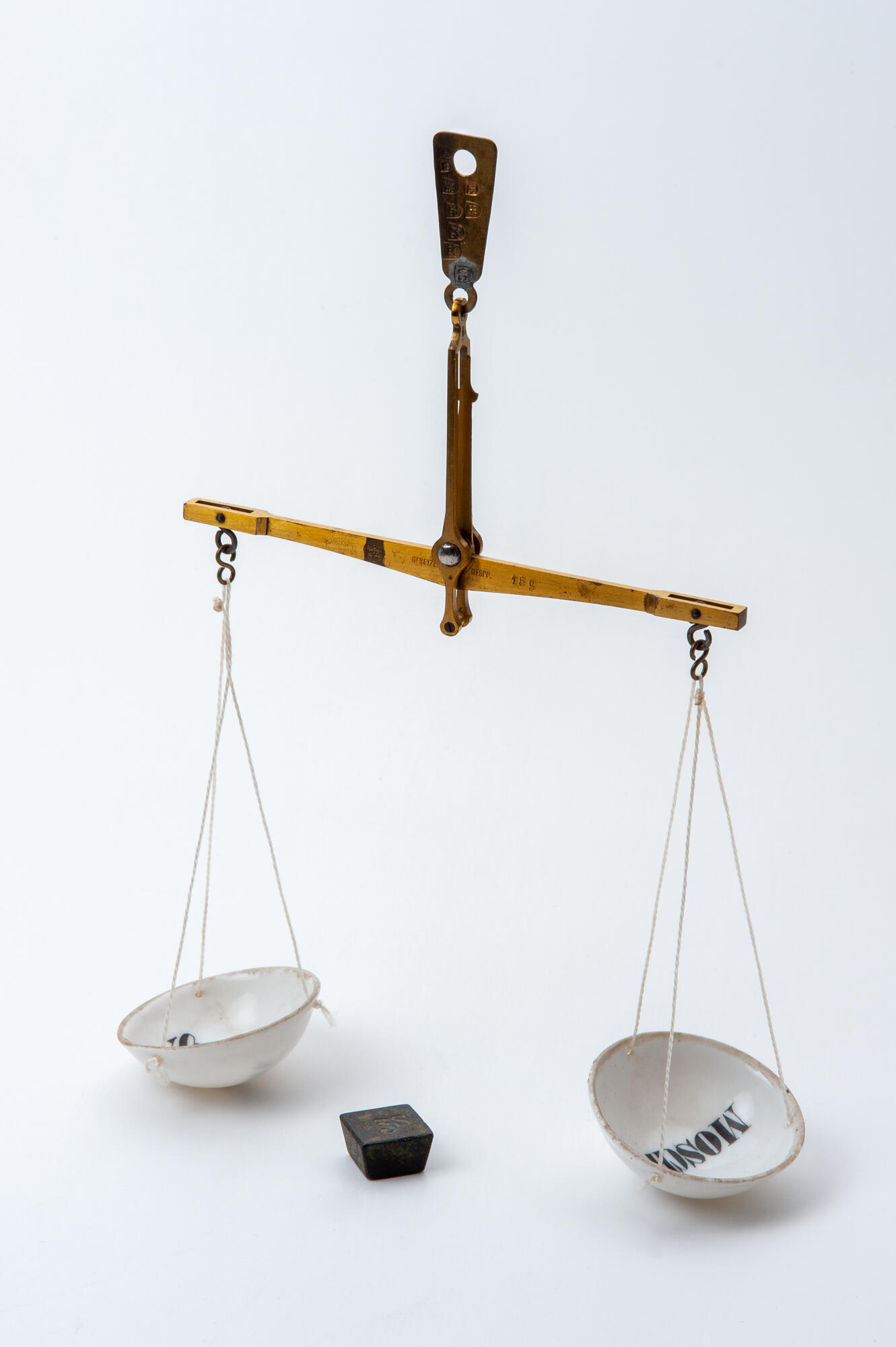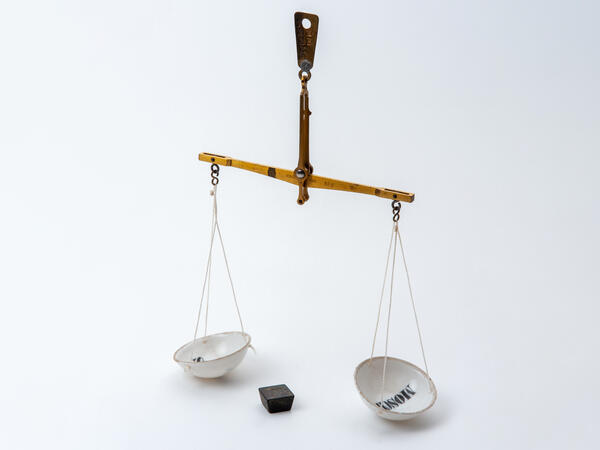Hand scales in the form of a balancing arm may have been the first mass measuring device. They were used by jewelers, chemists, and pharmacists to accurately measure small masses of dry matter. The scales were placed in special cases, and a specific set of apothecary scale weights was included in the kit.
The apothecary weighing system (‘apothecary weight’) was pan-European because it was based on the weight system of the Roman Empire. Its main unit was the apothecary pound (357.8 g), divided into 12 ounces (29.82 g). An ounce contained 8 drams (3.73 g), a dram — 3 scruples (1.24 g), 1 scruple — 20 grains (0.062 g). At the same time, in different countries, and sometimes in different regions of the same country, the apothecary pound had different values. From the second half of the 19th century, metric units had been used in some European countries along with traditional apothecary measures. It was the special weights in the kit that allowed for determining the purpose of the ancient hand scales that came down to us.
Another distinctive feature of apothecary scales was the size of their bowls. Bowls with a diameter of 50 to 80 mm were made for apothecary scales, while bowls with a smaller diameter (30–40 mm) were intended for weighing coins. At the same time, scales with bowls from 40 to 50 mm in diameter could be used for both purposes: it was important for pharmacists, as well as merchants, to check the quality of coins that they received for medicines. Manual scales did not lose their popularity, even when desktop beam scales began to appear and were used in pharmacies at the end of the 20th century until they were completely replaced by electronic ones.
The balancing arms of the scales presented in the exhibition are made of brass, and the bowls are made of porcelain. This material does not react chemically with the drug and is easy to clean. Individual scales were used for toxic mixtures. The inscription ‘moschus’ is translated from Latin as ‘musk’ — a substance extracted from the glands of musk deer. Musk has often been used in homeopathy to treat hysteria and hypochondria. Its smell is so heavy and biting that even after thorough cleaning and ventilation of the room, it does not completely disappear. Perhaps this is the reason that the pharmacy used separate scales for musk.



